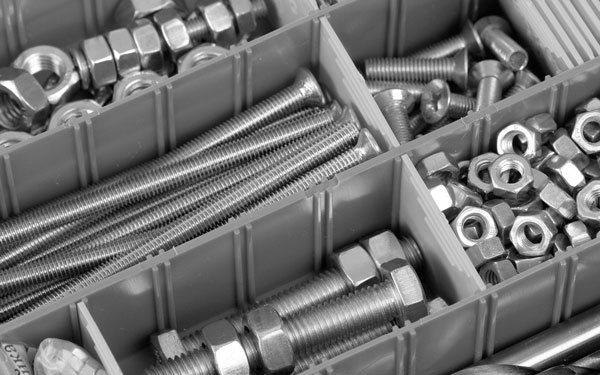
Getting down to the “nuts and bolts” has always been synonymous with looking at the essential parts, integral to the successful completion of a project; when you’re talking about a construction project, saying this is as pertinent as ever. It is easy to overlook fixings and fasteners when you are first planning a project, but without the nuts and bolts your build will never get built.
There are hundreds of different types of fixings and fasteners, each designed specifically so that you have the right pieces holding parts of your project together. You will need to consider a number of factors when choosing the right fastener; if you are building something out of wood (for instance), then there is a good chance that you will want to use wood screws. But selecting the right screws for the material is only part of it, because then you need to consider the purpose and required fit.
You might need your screws to fit flush with the material and have them protected from removal, or you might want a raised fit with screws that are easy to extract and replace. Fixings exposed to the elements may need to be waterproof and have some level of corrosion resistance. Size is another factor that you should bear in mind; in the case of wood work, a smaller screw is less likely to split wood than a large one (depending on what type of you are working with).
When you are working with a spot is hard to reach, some fixings and fasteners will not offer the level of flexibility you require should you need to make repairs. In this case you might find that it’s a good idea to use self-drilling screws to give you the best chance of driving it home on the first attempt. The primary differences you will find between screws (aside from the material and size) are the head shapes, driving methods and thread types; these factors will also have an impact on the type of task you require them for.
Below is a brief list of some the different heads, threads and driving methods available.
Head Shapes
Pan head screws have the standard type of head profile, which is of an average diameter/height.
Button head screws are similar to pan heads with a slightly curved top.
Round head screws have a more pronounced curve than button head screws.
Flat head screws are (you guessed it) flat on top, with a tapered underside for countersunk holes.
Oval head screws are tapered on the underside like a flat head, with an egg-shaped top.
Truss head screws have large diameters and low profiles.
Fillister head screws have a thick profile with a slightly rounded top.
Thread Types
Wood screws have threads specifically designed for use with wood and have deep, coarse threads for gripping into timber.
Machine screws have finer threads than wood screws and are generally intended to be used in conjunction with nuts or tapped hole.
High/low screws have two sets of threads with alternating heights, designed for use with plastics and other low density materials.
Self-tapping (or thread-forming) screws have threads designed to tap their own holes which is sometimes achieved by gaps in thread continuity.
Driving Methods
Slotted screws are those driven in with a flat head screwdriver and are one of the most common screws.
Philips screws are an improvement on the slot design, with a larger mating area between the crew and driver, with a cross-shaped groove that fits a Philips head screwdriver.
Hex heads are hexagonally shaped and tightened with a wrench, as they have no grooves or slots for a screwdriver to fit into.
Square heads (or Robertson drive) are square shaped and tightened with a special driver.
One Way heads can be tightened with standard flat head screwdriver, but require special tools to remove.
Torx heads have a six-point recess and can be driven in using torx screwdrivers.
Here are some related articles:
Save this article to:
back to top